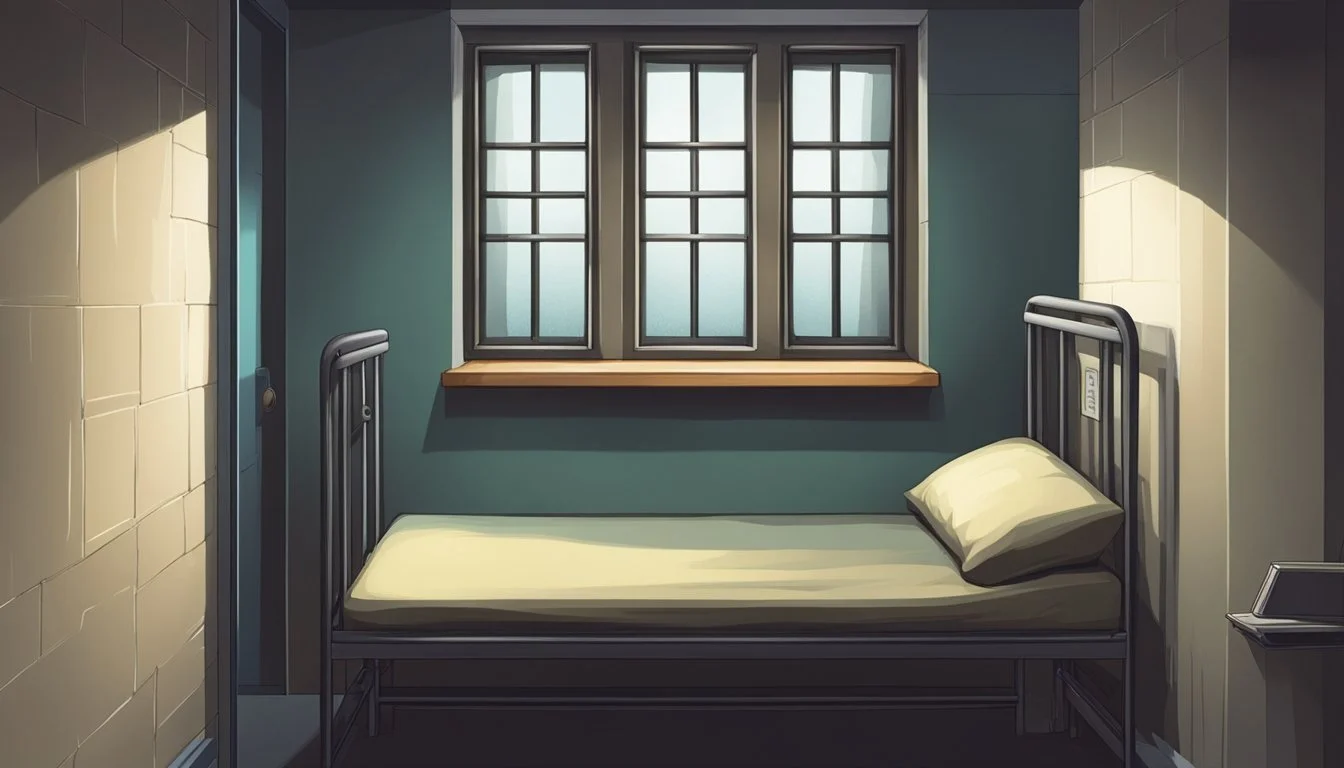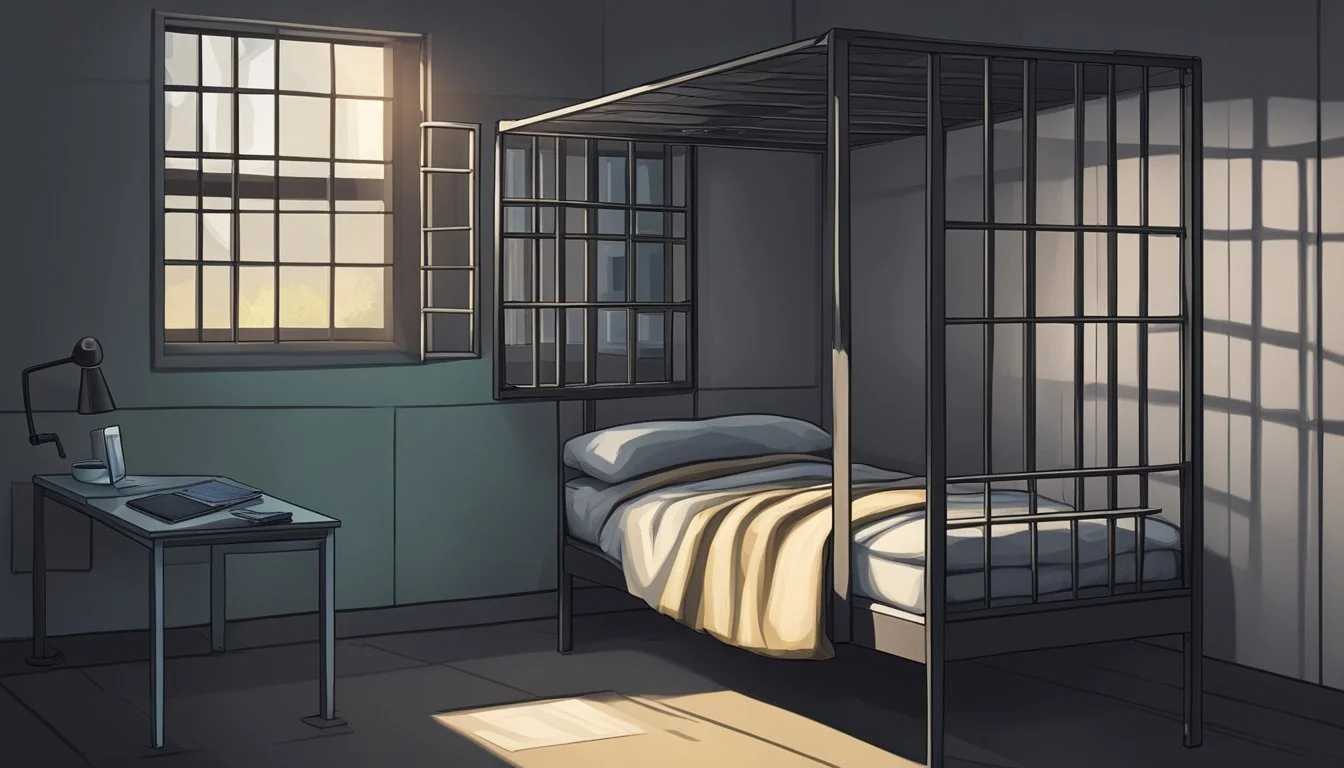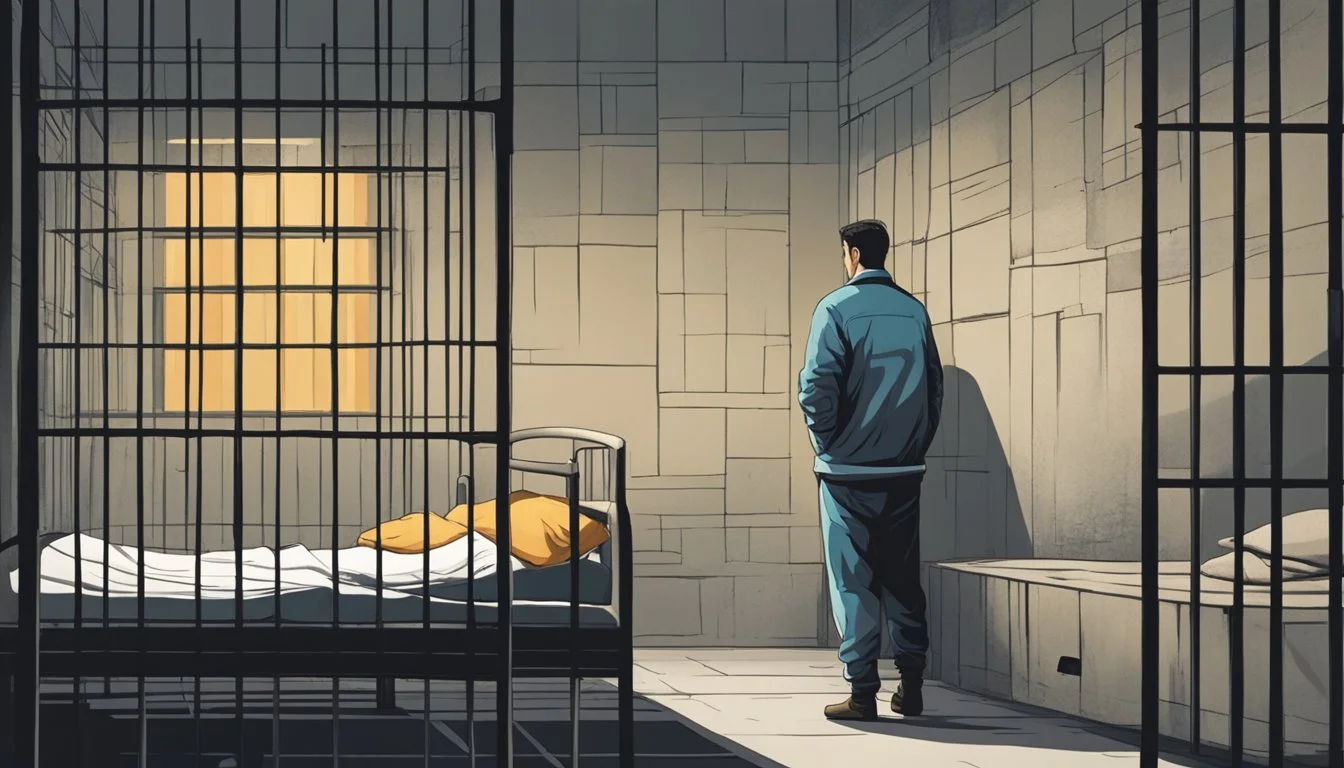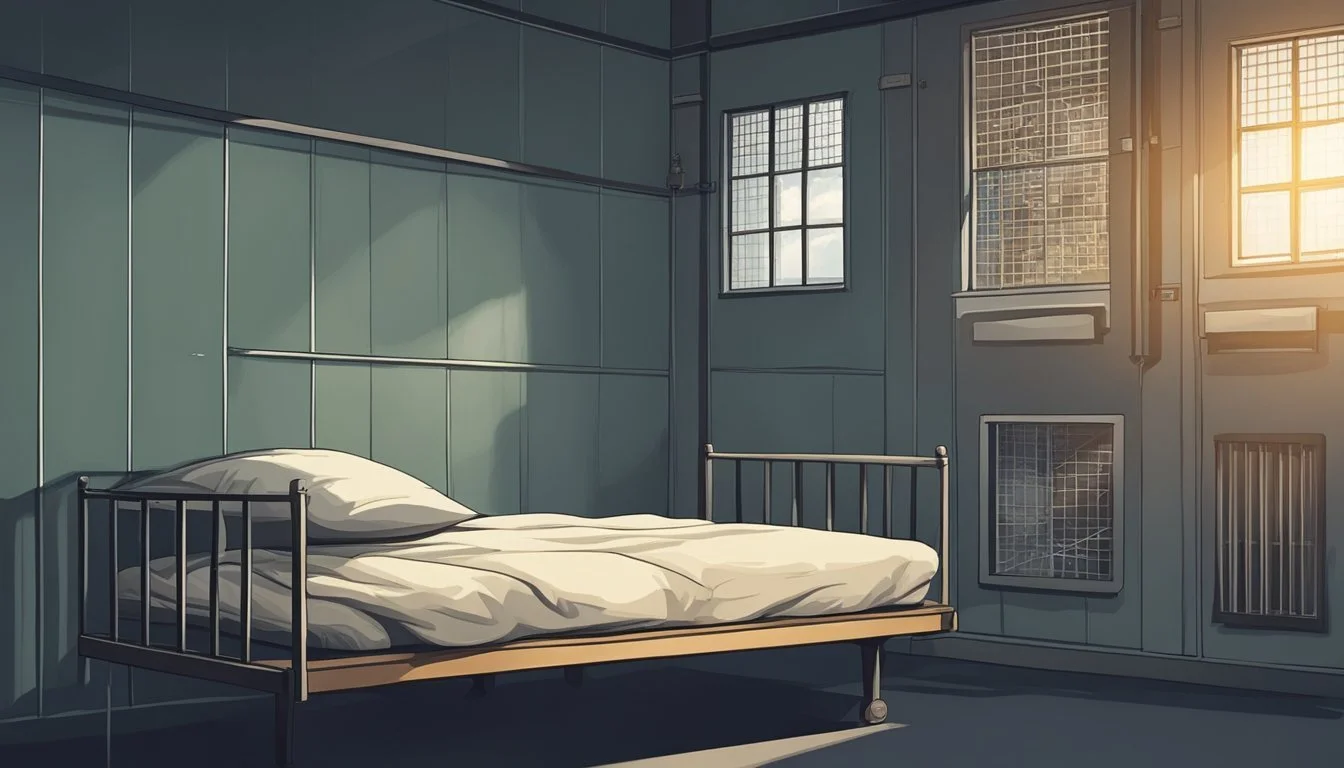Chester Turner: Is South Central Slayer Still Breathing on Death Row?
Convicted Serial Killer's Status Updated
Chester Turner, infamously known as the South Central Slayer, terrorized Los Angeles in the 1980s and 1990s. His brutal crimes left a trail of devastation, claiming the lives of numerous women along the Figueroa Corridor. As of September 2024, Chester Turner remains alive on death row at San Quentin State Prison in California.
Turner's reign of terror came to an end with his arrest and subsequent convictions for multiple murders. The courts sentenced him to death in 2007 for his heinous acts. Since then, he has joined hundreds of other inmates awaiting execution in the California prison system.
The case of Chester Turner continues to captivate public interest, with documentaries like "The Lost Women of South Central" shedding light on his victims and the impact of his crimes. Recent developments have even linked Turner to a cold case in Utah, further expanding the scope of his alleged atrocities.
The Crimes of Chester Turner
Chester Turner terrorized South Los Angeles from 1987 to 1998, murdering at least 14 women and one unborn child. His violent spree left a trail of devastation along Figueroa Street and surrounding areas.
Timeline of Murders
Turner's killing spree began in 1987 with the murder of Diane Johnson. Over the next 11 years, he claimed at least 13 more victims:
1987: Diane Johnson
1989: Annette Ernest
1992: Anita Fishman
1993: Regina Washington and her unborn child
1994: Andrea Tripplett
1995: Desarae Jones, Natalie Price
1996: Mildred Beasley
1998: Paula Vance, Brenda Bries
Most victims were found within a 30-block radius of downtown Los Angeles. Turner targeted vulnerable women, many involved in sex work or struggling with addiction.
Methods of Killing
Turner's modus operandi was consistent throughout his crimes. He would:
Approach victims on foot, often on Figueroa Street
Lure them to secluded areas
Sexually assault them
Strangle them to death
DNA evidence linked Turner to the murders. He often left his victims' bodies in alleys, vacant buildings, or other isolated locations. Turner's brutal methods and the sheer number of victims earned him the moniker "South Central Slayer."
His reign of terror ended in 2002 when DNA evidence connected him to multiple murders. Turner received a death sentence in 2007 for 10 murders, with an additional death sentence in 2014 for 4 more killings.
Victims and Their Stories
Chester Turner's victims were predominantly vulnerable women from South Central Los Angeles. Many were sex workers, homeless, or struggling with addiction.
Remembering the Lost
Diane Johnson, 21, was Turner's first known victim in 1987. Annette Ernest, 26, was killed in 1989. Anita Fishman, 31, lost her life in 1992. Desarae Jones, 29, was murdered in 1993. Mary Edwards, 42, and Andrea Triplett, 29, were both killed in 1994.
Brenda Bries, 37, and Itisha Camp were among Turner's victims in 1995. Deborah Williams, 28, and Cynthia Annette Johnson, 30, lost their lives in 1996. Natalie Price, a pregnant woman, was murdered in 1998.
Impact on Families
The families of Turner's victims endured immense pain and loss. Many struggled to find closure as the cases remained unsolved for years. Paula Vance's family waited over a decade for justice.
Some victims, like Elandra Bunn, left behind young children. The ripple effects of Turner's actions devastated entire communities. Support groups formed to help grieving families cope with their trauma.
Local organizations stepped up to provide resources for those affected by the murders. The cases highlighted the need for better protection of marginalized women in South Central Los Angeles.
The Investigation
The investigation into Chester Turner's crimes spanned over a decade, relying heavily on DNA evidence and advances in forensic technology. Detectives meticulously pieced together clues from multiple crime scenes across South Central Los Angeles.
DNA Evidence Breakthrough
DNA evidence proved crucial in cracking the Chester Turner case. In 2002, a DNA sample from Turner matched evidence from several unsolved murders in the CODIS database. This breakthrough allowed investigators to link Turner to numerous killings dating back to 1987.
The LAPD cold case unit re-examined old evidence using new DNA technology. They discovered Turner's genetic profile matched samples from multiple crime scenes. This scientific evidence provided a solid foundation for the prosecution's case.
Arrest and Conviction
Turner was arrested in 2002 while serving time for an unrelated sexual assault. Detectives interrogated him about the string of murders in South Central Los Angeles. Initially denying involvement, Turner eventually confessed to some of the killings.
The trial began in 2007. Prosecutors presented DNA evidence linking Turner to 10 murders. They also highlighted his pattern of targeting vulnerable women in the Skid Row area. The jury found Turner guilty on all counts.
In 2007, Turner received his first death sentence. He was convicted of an additional four murders in 2014, resulting in a second death sentence. Turner now awaits execution on California's death row at San Quentin State Prison.
Legal Proceedings
Chester Turner faced multiple trials and convictions for his crimes. His case progressed through various stages of the legal system, including appeals and death row incarceration.
Trials and Sentencing
Turner stood trial for a series of murders in Los Angeles. In 2007, he was convicted of 10 counts of first-degree murder and one count of second-degree murder. The judge sentenced Turner to death for these crimes on July 10, 2007.
In a subsequent trial, Turner was found guilty of four additional murders. This brought his total number of murder convictions to 14.
Appeals and Death Row
Following sentencing, Turner was transferred to San Quentin State Prison's death row. He joined over 700 other inmates awaiting execution in California.
Turner's lawyers filed appeals, a standard process for death row inmates. In 2014, his case faced further legal scrutiny. The California Supreme Court overturned one of Turner's convictions in 2020, specifically related to an unborn child.
Despite this, Turner remains on death row for the other 14 killings. His case continues to move through the appeals process, as is typical for capital punishment cases in California.
Chester Turner's Background
Chester Dewayne Turner's troubled past and psychological makeup shed light on the factors that contributed to his heinous crimes. His early life experiences and criminal history reveal a pattern of escalating violence and sexual offenses.
Early Life and Criminal Record
Chester Dewayne Turner was born on November 5, 1966, in Arkansas. He moved to Los Angeles as a child with his mother. Turner's early years were marked by instability and poverty.
As a young adult, Turner began accumulating a criminal record. He was convicted of assault in 1995 and served time in prison. Upon release, Turner struggled with homelessness and substance abuse.
In 2002, Turner was arrested for rape. DNA evidence linked him to multiple unsolved murders in South Central Los Angeles. This breakthrough led to his identification as the South Central Slayer.
Psychological Profile
Experts classify Turner as a sexually motivated serial killer. His crimes exhibited a consistent pattern of sexual assault followed by strangulation.
Turner displayed traits common to many serial killers, including lack of empathy and a desire for control. He targeted vulnerable women, often those involved in prostitution or drug use.
Psychologists noted Turner's calm demeanor during his trial, suggesting a detachment from the gravity of his actions. This behavior aligns with characteristics of antisocial personality disorder, frequently observed in serial offenders.
Turner's background as a registered sex offender highlights the escalation from earlier sexual crimes to murder. This progression is typical in the development of serial killers with sexual motivations.
Community Impact
Chester Turner's crimes left deep scars on South Los Angeles. His actions sparked advocacy efforts and increased awareness about violence against vulnerable populations.
South Los Angeles
Turner's killing spree targeted marginalized individuals in South Los Angeles. Many victims were sex workers, homeless people, or those struggling with crack cocaine addiction. His crimes exacerbated existing fears and tensions in an area already grappling with high crime rates and economic challenges.
The murders highlighted the vulnerability of certain groups within the community. Local residents became more wary of strangers and suspicious of unusual activities in their neighborhoods. Some businesses saw decreased foot traffic as people avoided areas associated with the killings.
Law enforcement faced criticism for their slow response to the pattern of murders. This led to strained relations between police and the community, particularly among those who felt their concerns were ignored.
Advocacy and Awareness
Turner's case sparked increased activism in South Los Angeles. Community organizations formed to support families of victims and raise awareness about violence against women and marginalized groups.
Advocacy groups pushed for better protection of sex workers and homeless individuals. They demanded more resources for addiction treatment and mental health services in the area. Some organizations started outreach programs to provide safety information and support to vulnerable populations.
The case also drew attention to systemic issues in crime investigation. Activists called for improved forensic technologies and better communication between law enforcement agencies to prevent future serial killers from operating undetected for extended periods.
Comparative Analysis
Chester Turner's case stands out among serial killers due to his high victim count and the lasting impact on South Central Los Angeles. His crimes and media portrayal offer insights into the broader landscape of serial murder and its representation.
Turner Among Other Serial Killers
Chester Turner's crimes place him among the most prolific serial killers in Los Angeles history. With 14 confirmed victims, Turner's victim count surpasses that of many notorious American serial killers. His modus operandi of strangling vulnerable women in South Central LA sets him apart from killers like Richard Ramirez, known as the Night Stalker, who targeted a wider geographic area.
Turner's crimes spanned from 1987 to 1998, a significant duration that allowed him to evade capture. This longevity is comparable to other prolific serial killers such as Gary Ridgway, the Green River Killer. Turner's case highlights the challenges law enforcement faced in identifying and apprehending serial offenders in urban areas during that period.
Media Representation
The media portrayal of Chester Turner differs from more sensationalized serial killer cases. Documentaries like "The Lost Women of South Central" focus on Turner's victims, shedding light on the lives affected by his crimes. This approach contrasts with the often-glamorized depictions of serial killers in popular culture.
Turner's case has been featured in true crime series such as "Evil Lives Here" and "I Was His First Victim." These programs aim to provide a more nuanced perspective on the impact of serial killers on communities and survivors. The media representation of Turner's crimes emphasizes the systemic issues that allowed him to operate undetected for years in South Central LA.
Unlike high-profile cases that garnered immediate national attention, Turner's crimes received less coverage during his active years. This discrepancy raises questions about media bias and the underreporting of crimes against marginalized communities.
Law Enforcement and Preventive Measures
The Chester Turner case prompted significant changes in law enforcement practices and security measures in Los Angeles. These improvements aimed to enhance public safety and prevent similar crimes in the future.
LAPD's Role and Improvements
The Los Angeles Police Department (LAPD) faced criticism for their handling of the Turner case. In response, they implemented several key changes.
The department increased patrols in high-risk areas, particularly along the Figueroa Corridor where many of Turner's crimes occurred. They also improved their DNA analysis capabilities, investing in new technology and expanding their forensic team.
LAPD established specialized units focused on serial crimes and cold cases. These teams received additional training in identifying patterns and linking seemingly unrelated homicides.
The department also enhanced its community outreach efforts. Officers worked to build trust with residents in South Central, encouraging them to report suspicious activities promptly.
Security Measures Post-Case
Following Turner's arrest, local authorities implemented new security measures in vulnerable neighborhoods.
Street lighting was improved along the Figueroa Corridor and surrounding areas. The city installed additional security cameras in high-crime zones.
Community watch programs were expanded and received support from law enforcement. Residents were trained to recognize and report potential criminal activities.
Local businesses were encouraged to enhance their security systems. Many installed better lighting and surveillance equipment.
Public awareness campaigns educated residents about personal safety. These programs provided information on self-defense techniques and emphasized the importance of traveling in groups, especially at night.
Broader Implications
Chester Turner's case had far-reaching consequences beyond the immediate victims and their families. It exposed systemic issues in law enforcement and challenged societal perceptions of violence against marginalized communities.
Impact on Legislation
Turner's crimes led to changes in DNA collection policies for arrested individuals. California expanded its DNA database, requiring samples from all felony arrests. This shift helped solve cold cases and prevent future crimes.
Law enforcement agencies implemented improved training protocols for investigating serial killings. They focused on recognizing patterns and collaborating across jurisdictions.
Victim advocacy groups successfully lobbied for increased funding for support services. This included counseling and financial assistance for families affected by violent crimes.
Changing the Narrative
Media coverage of Turner's case sparked discussions about racial and socioeconomic disparities in crime reporting. Activists highlighted the need for equal attention to all victims, regardless of background.
Public awareness campaigns emerged to address violence against sex workers and other vulnerable populations. These efforts aimed to reduce stigma and improve safety measures.
Community organizations in South Central Los Angeles developed mentorship programs and youth initiatives. Their goal was to provide positive alternatives and prevent future violence in the area.





